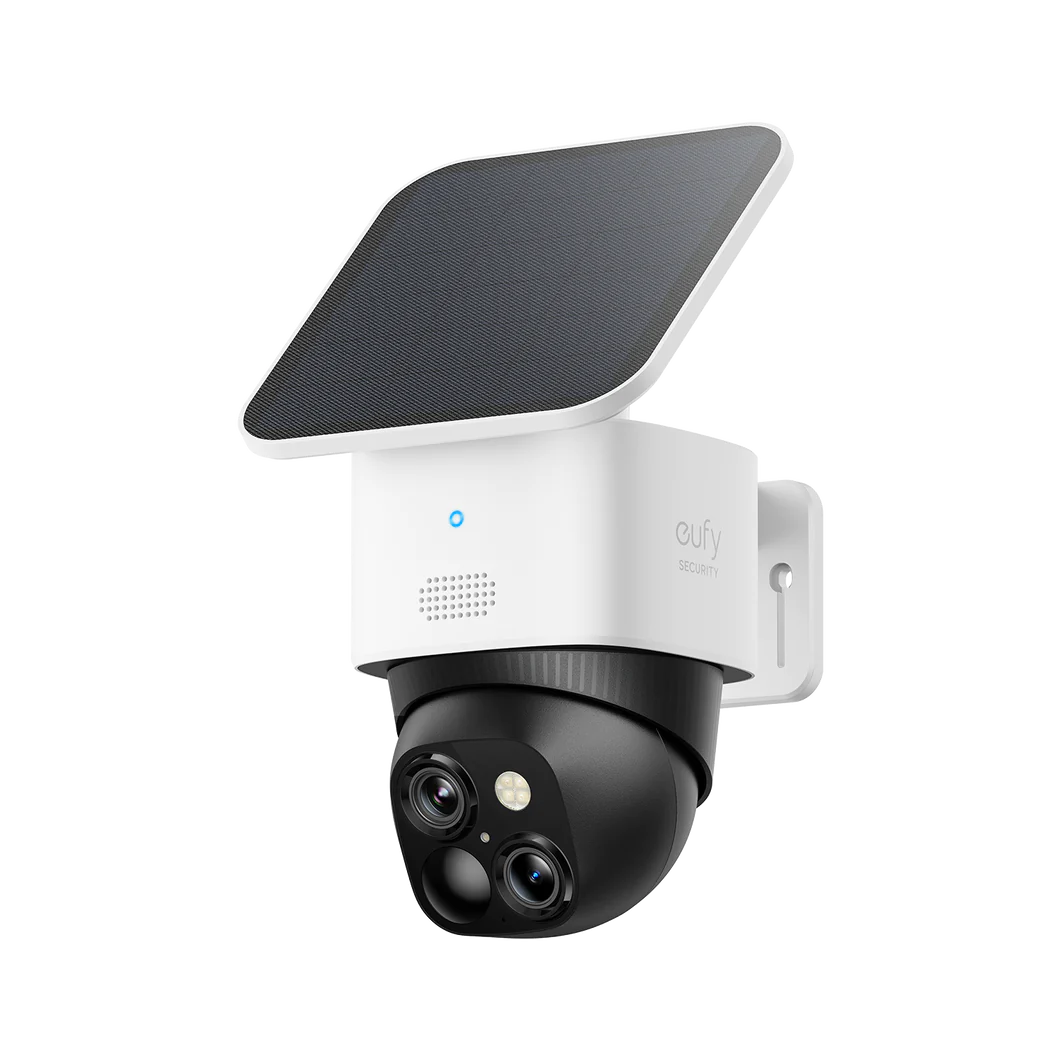Eufy Security SoloCam S340 Review
TL;DR
Complete waste of plastic and silicon, 0 out of 5. DO NOT BUY.
Pros and Cons
Specifications
| Specification | Value | |-----------------------|------------------------------------------------------| | Resolution | Wide-Angle Lens 2880x1620, Telephoto Lens: 2304x1296 | | Field Of View | 135° | | Pan and Tilt | Horizon 360°, Vertical 70° | | Solar Panel | 2.2W | | Storage | 8GB eMMC (Not user accessible) | | Operating Temperature | -4°F - 122°F (-20°C - 50°C) |
Review
Now that it's spring in central Ohio, we decided to start feeding the local tiny dinosaurs fluttering around, so we picked up a bird feeder and some feed for the little critters.
After a couple days, we enjoyed watching them, but they were rather skittish and tended not to enjoy our presence, so I thought we could try a security camera to keep an eye on them and maybe capture some interesting birds.

I'm lazy and opted to try not to run PoE outside, so I picked up the Eufy Security SoloCam S340, which is a battery-powered wireless (2.4GHz wifi) camera with an included solar panel for charging. Having installed a NUMBER of security cameras in professional environments I'm rather familiar with them; connect to network, log into the camera, configure, set RTSP stream on NVR.
Easy peasy, right? Well, not so much.
Turns out Anker decided to go with a different route.
Since this is a wireless camera, it needs some method of setting the connection string, which makes perfect sense.
It didn't appear to have Bluetooth so I figured the app would have some little trick and downloaded that.
First launch of the mobile application prompted me with a user login or register.
First red flag. This is a local device on a local network, it makes zero sense as to why I would need to register an account with a third party to access it.
Alright, whatever, so I loaded up a temporary 10-minute email and registered. Fuck Anker if they think they're getting my actual info.
So a quick disposable account and it provides an easy QR-code method for setting the connection string. It's a camera; it can take pictures. This method actually made a lot of sense which I really appreciated.
Red flag number 2 though; when on my local-only VLAN it didn't complete the registration.
Ok, weird, I'll switch it back to my live VLAN which does have internet access. This one worked.
Grabbed the IP and went to access the camera via HTTP but realized nothing came up. hmm, weird. So I did an nmap scan of the local IP which revealed nothing. Absolutely nothing; not a single port was open for local management.
Turns out, this little local device ONLY sends data to a third party Amazon server.
I'll repeat that.
This device which sits on a local network and is meant to record private video on private property is sending everything to a third party.
NOPE, not gonna fucking happen!
Standalone devices like this should never be sending data to a third party server, let alone even have access to the public internet!
For privacy, this device gets 0 out of 5. It's not secure and not private! DO NOT use this device anywhere where you don't mind literally anyone in the world being able to view.
For management, this device also gets 0 out of 5. There is no local administration, so that's just an immediate fail.
I was only able to find what data it sends back and forth from the server via performing MITM analysis against the device, so openness of the platform gets a big fat fail as well.
The device has no screws holding it together, and about 10 minutes of prying against what I can only assume is the entry point into the camera didn't yield many results other than scuffing the plastic, so I can only assume it's not repairable either; another fail.
The keen eye readers may notice that I am yet to actually review how the device actually performs.
And that is correct. If I cannot get a device working locally, then I see no reason to continue reviewing it.
Final Thoughts
All in all, this camera may be acceptable for folks who don't mind the recorded video and data being sent to a third party and potentially visible to anyone, but its lack of local support means it's a complete waste of money and time for me.
Improvements
Being a software developer, going to your project manager with "the product has XYZ issues" is fine, but going with "the product has XYZ issues and this is how I feel it can be improved" is even better. As such, I feel obliged to mention how I feel this product could be improved.
Local management. That's it. Allow the user to opt to enable local management of this camera so that it does not require an internet connection. This can even be done from within the silly registration system; just some method to toggle an "advanced" mode.
Even if RTSP cannot be enabled due to battery life constraints, at least allow a web interface for configuration and viewing along with FTP upload to a local server.
That's all it would take for this camera to go from an utter piece of rubbish to a very respectable product.